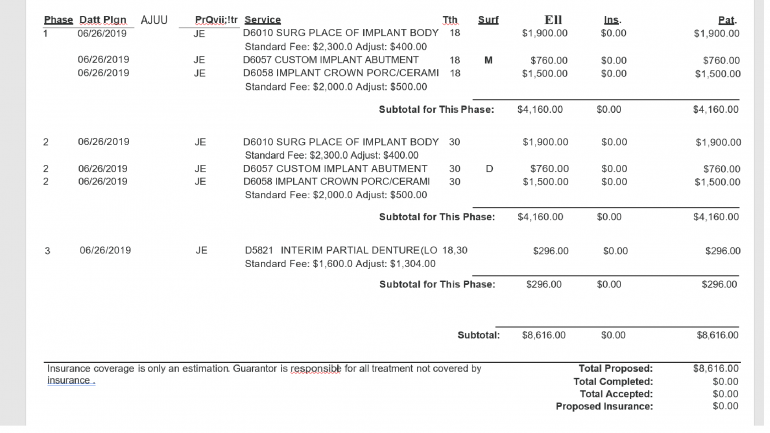
Dental Code D7241: Removal of impacted tooth - completely bony, with unusual surgical complications
Dental Code D7241 is used to describe a specific dental procedure that involves the removal of an impacted tooth. In this case, the tooth is completely encased in bone and presents unusual surgical complications. This code is assigned to identify and bill for the complex nature of the procedure, which requires additional expertise and careful management.
Detailed Information about the Procedure:
Dental Code D7241 refers to the removal of an impacted tooth that is completely covered by bone and presents unusual surgical complications. This complex procedure involves a thorough assessment, anesthesia administration, making an incision, removing bone, extracting the tooth, managing surgical complications, closing the wound, and providing aftercare instructions. It is important to consult with an experienced dentist for optimal outcomes and to minimize risks.
Initial Assessment and Diagnosis
Before proceeding with the removal of an impacted tooth, the dentist will conduct a thorough assessment and diagnosis. This involves a comprehensive examination of the oral cavity and may include dental X-rays or 3D scans. These imaging techniques allow the dentist to evaluate the position of the impacted tooth, its relationship to neighboring structures such as nerves or sinuses, and any potential complications that may exist. The dentist will carefully analyze the images to develop an effective treatment plan while minimizing risks and complications.
Anesthesia and Incision
To ensure a comfortable experience during the procedure, anesthesia is administered. Local anesthesia is commonly used, which involves the injection of a numbing medication around the affected area. This prevents pain and discomfort during the surgery. In some cases, conscious sedation or general anesthesia may be recommended, particularly if the patient is anxious or if the procedure is complex.
Once the area is numb, the dentist will make an incision in the gum tissue overlying the impacted tooth. This exposes the underlying bone and provides access to the tooth. The incision is carefully placed to ensure minimal damage to surrounding tissues.
Bone Removal and Tooth Extraction
In cases where the impacted tooth is completely encased in bone, the dentist will need to remove a section of the surrounding bone to gain access to the tooth. This process is called bone removal or osteotomy. It is performed using specialized instruments, such as burs or chisels, with great precision and care.
After the bone is removed, the dentist can fully visualize the impacted tooth. Depending on the tooth's position and accessibility, forceps may be used to grasp and remove the tooth. In certain situations, where the impacted tooth is firmly lodged or has complex root anatomy, the dentist may need to section the tooth into smaller pieces for easier extraction. This technique allows for safer and more efficient removal of the impacted tooth.
Surgical Complications Management
Dental Code D7241 specifically refers to the presence of unusual surgical complications during the removal of an impacted tooth. These complications may include the tooth being located in close proximity to vital structures, such as nerves or sinuses, or the tooth having abnormal positioning.
When such complications arise, the dentist employs advanced techniques to manage and resolve them. For example, if the impacted tooth is positioned close to a nerve, a procedure known as nerve repositioning may be necessary. This involves carefully moving the nerve away from the tooth to prevent damage during extraction. Similarly, if the impacted tooth is near a sinus cavity, a sinus lift procedure may be performed to create additional space and ensure a safe extraction.
In some cases, the removal of an impacted tooth with unusual surgical complications may require bone grafting. This involves the placement of bone material in the extraction site to promote proper healing and prevent complications such as bone loss or deformities.
Wound Closure and Aftercare
After the impacted tooth has been successfully removed, the dentist will meticulously clean the surgical site to remove any debris or bacteria. The incision is then closed using dissolvable stitches or sutures. In some cases, a gauze pack may be placed to control bleeding and promote the formation of a blood clot.
The dentist will provide detailed aftercare instructions to ensure proper healing and minimize discomfort. This may include pain management strategies, such as prescribing pain medication or recommending over-the-counter pain relievers. The patient will also receive dietary restrictions, such as avoiding hard or chewy foods that can irritate the surgical site. Additionally, the dentist will provide guidance on oral hygiene practices, such as gentle brushing and rinsing with a saltwater solution, to keep the area clean and aid in healing.
Summary of Dental Code D7241
Dental Code D7241 represents the removal of an impacted tooth that is fully encased in bone and presents unusual surgical complications. This complex procedure requires a thorough assessment, careful planning, and skilled execution by a qualified dentist. The steps involved encompass initial assessment and diagnosis, administration of anesthesia, making an incision, bone removal, tooth extraction, management of surgical complications, wound closure, and postoperative care.
Discover the ultimate savings on dental care with Dr. BestPrice! Your smile deserves quality without the hefty price tag.
